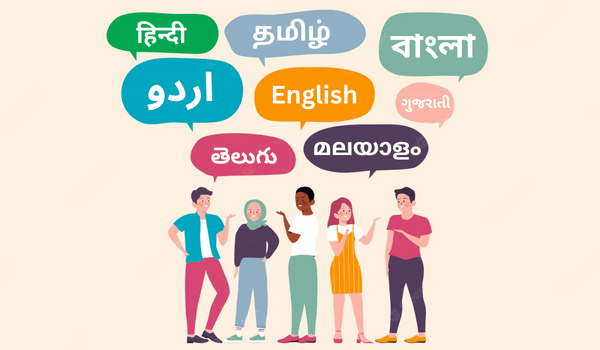Given the large and diverse working population in the country, Indian organisations have to deal with a range of issues at the workplace. One of the primary ones is the problem of groupism – the tendency to conform to the cultural pattern of a group at the expense of individualism and cultural diversity.
In India, language plays a huge role in culture. With most Indian states having their own unique language and culture, it is understandably easier for those who speak the same language to relate to each other better. When some in the workforce enjoy such an advantage, the others who do not follow the language tend to feel left out or unheard.
It is the job of the HR department in an organisation to ensure that employees are well accommodated and not discriminated against in any form.
In industries such as information technology (IT), people from all over the country fly in to work in big metropolitans, such as Bengaluru and Hyderabad. Rarely do these professionals try to learn the local language spoken in these cities. After all, it is easier to find a group of people who already relate to them at some level.
Linguistic groupism in a corporate environment can cause myriad issues. Let’s look at some.
Bad teamwork
Employees who work together on a project but are from different groups can create a situation where one individual isn’t open to working with the other. This restricts team effort and creates a sub-par product.
Networking hassles
There are times when new recruits are unable to find a group to fit into on entering or joining a company. Such social complications cause unnecessary stress to the employees, which can reflect in their work, adversely affect their productivity, and leave them feeling unsatisfied and having shallow networks.
Dip in productivity
With lower satisfaction levels at work, employees lose the motivation to do their best. This leads to them feeling undermotivated, which directly affects the quality of their work.
Adverse work environment
“When organisations begin to openly favour certain groups, it leads to a dysfunctional workplace lacking in diversity.”
Amit Sharma, vice president, head – people and culture, Volvo Group India
When various issues trouble employees, the work environment breeds inefficiency and unhappiness among them. This leads to unhealthy competition among groups and a drop in individual performance.
Any form of groupism showcases an organisation’s inability to promote good communication among employees. When groups are formed on the basis of their language, it makes it even harder for employees to communicate clearly, not allowing them to voice their opinions in a holistic manner.
Amit Sharma, vice president, head – people and culture, Volvo Group India, details some of the issues he observes when such groupism occurs in an organisation.
“When organisations begin to openly favour certain groups, grapevines are formed within other groups, causing unnecessary office politics. This, in turn, leads to a dysfunctional workplace lacking in diversity,” he enumerates.
What is the solution?
An organisation that promotes good communication and emphasises the importance of a productive work environment will work towards rectifying the issues caused by linguistic groupism. Here is how they can go about it.
Better diversity & inclusion programmes
“When an organisation becomes open to including everyone — making that the celebrated culture — it becomes easier for it to battle issues such as linguistic groupism.”
Mangesh Bhide, senior vice president and HR head, Reliance Jio Infocomm
In India, diversity and inclusion programmes have been targeted on a gender and caste basis more than anything else. One of the key ways companies inadvertently cause linguistic groupism is when their new recruits are not from diverse backgrounds.
It is up to the organisations to create a space where people of all cultures are welcomed and the possibility of ostracising a particular person or group of people is mitigated.
Companies need to ensure happier employees who are more receptive to the company’s needs, communicate freely, and are aligned with its vision. For this to happen, simple programmes need to be introduced that will initiate conversations around linguistic diversity and the importance of having a homogeneous workplace. Only then can employee welfare be guaranteed.
Mangesh Bhide, CHRO, senior vice president and HR head, Reliance Jio Infocomm, ensures that, “diversity and inclusion programmes, in essence, allow for diverse thoughts, feelings and actions. When an organisation becomes open to including everyone — making that the celebrated culture — it becomes easier for it to battle issues such as linguistic groupism”.
Well-rounded talent acquisition and management
Nitin Thakur, head of learning and development (L&D) at Jindal Stainless, believes it is natural for a leader to hire from similar backgrounds. Citing an example, he says, “If an Asia-Pacific company is led by an Indian, chances are high that a significant portion of the new workforce will comprise Indians.”
It is common for organisations to show a tendency of bias while hiring and tasking, thus causing an uneven talent pool extenuating the problem at hand.
“If an Asia-Pacific company is led by an Indian, chances are high that a significant portion of the new workforce will comprise Indians.”
Nitin Thakur, head of learning and development (L&D) at Jindal Stainless
Creating a workplace where an organisation either intentionally or unintentionally hires members of a certain linguistic group causes employees in the linguistic minority to feel undervalued and underappreciated.
The same is true when organisations frequently assign important projects and tasks to those in majority in the organisation.
These issues can be quickly solved by examining the recruitment data already present at most organisations. Studying the hiring trends and making note of uneven hiring practices can help identify and then rectify the issue, thus helping create a better working environment.
Sharma emphasises on the importance of maintaining organisational diversity, “Organisations in India should be representing the regional and linguistic diversity in India. They need to make a conscious effort to look for diversity in parameters outside of gender. Trying to include members from various regions, languages, even educational institutions will help mitigate the issue of forming small cliques within an organisation.”
Company-wide policies
A trend seen in many foreign countries is the practice of enforcing an official language in the company. English is the preferred one in India. Many organisations are open to trying a company-wide linguistic rehaul that enforces a common spoken language at the workplace.
Having an official language will benefit those who find it difficult to communicate with larger linguistic groups. The latter are assumed to be communicating in the language they have in common.
Bhide acknowledges, “it is the responsibility of those in the linguistic majority to shift to an all-inclusive language to not alienate those in the minority.”
“Both the alienators and alienated have to work together to find a common language best suited to them all. That does not necessarily mean it has to be English,” says Bhide
Language is a significant part of basic communication and culture. Organisations that do not understand this fact often fail to include people from various linguistic backgrounds. This can cause problems at the most basic corporate levels. Although the recommended fixes may be simple on paper, organisations should take the first step to understand their linguistic demographic and the native issues they have to tackle.






